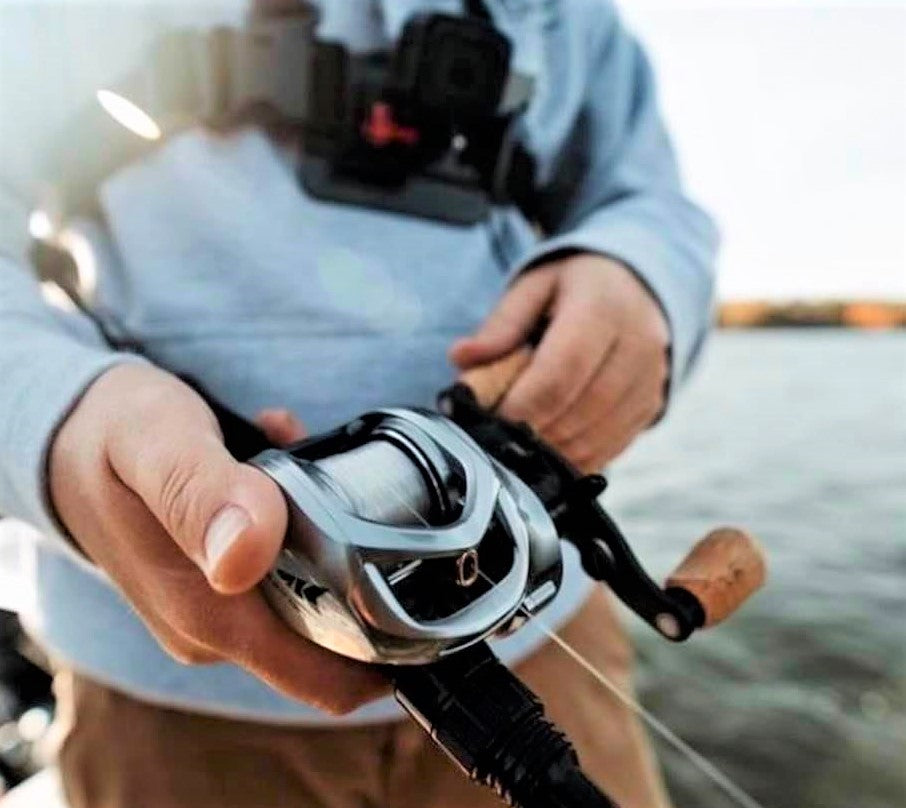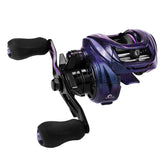
Saltwater Fishing Tackle Maintenance and Cleaning - Splish Splash Give It A Bath
Saltwater fishing reels and fishing rods have to deal with one of the most corrosive substances known on saltwater …salt. Fishing tackle cleaning and maintenance is the way to slow corrosion and rust.
“Aqueous corrosion” -- corrosion from saltwater is an electrochemical process. When in contact with seawater all metals and alloys have a specific electrical potential (corrosion potential) at a given level of the saltwater’s pH level -- acidity or alkalinity.

Saltwater, which contains chloride, is an exceptionally efficient electrolyte. Oxygen in marine environments – mostly in salt spray, and splash zones, and at times at much greater depths, increases the ferociousness of the salt’s attack. The concentration of oxygen dissolved at the water’s surface or in salt spray creates a cell that concentrates the attack. So, saltwater fishing rods and saltwater fishing reels used in surf fishing where sea spray is common, are more at risk than an item that is submerged to a great depth. Any nooks, crannies, or crevices on a fishing rod or fishing reel, no matter how small, that hold saltwater and its chlorides, rapidly become anodic and acidic. They are hidden starting points of corrosion.
Factors that influence rust and corrosion in water are: materials and design of the component, water chemistry (hardness, percentage of chlorides, and dissolved gases – oxygen being the most important), flow rate, presence of solids in the water, water temperature, and presence of bacteria. Yes, there are microbes that eat iron and excrete it as rust.
Fresh water can come from surface or ground sources. It usually contains less than 1% sodium chloride. Brackish water has between 1 and 2.5% sodium chloride, either from natural sources in otherwise fresh water or by dilution of seawater, by rain or freshwater runoff.
Seawater is usually about 3.5% sodium chloride. Salinity may be weakened in some areas by dilution with fresh water or concentrated by solar evaporation. Seawater is more corrosive than fresh water because of the higher conductivity and the penetrating power of the chloride ions. Therefore, a protective barrier (paint, wax, shielding oils, etc.) will help prevent rust and corrosion. The corrosion rate is related to the chloride content, oxygen availability, and the temperature (things corrode more quickly as the temperature increases). The 3.5% salt content of seawater produces the most corrosive chloride salt solution. The combination of high conductivity and oxygen solubility is at a maximum at this concentration (oxygen solubility is reduced in more concentrated salt solutions).
All of this may not make sense, but the one thing to keep in mind is – saltwater, if left to do its job will corrode any metal over time. All metals, to some degree, will corrode depending on their position in the "Electromotive Series of Metals," also known as the "Galvanic Series of Metals." For example, stainless steel will outlast aluminum, but not as much as nickel.
Even though you have carefully selected fishing tackle for saltwater fishing that has stainless steel, aluminum, alloy, or space age plastic components, salt can still take its toll.
How can you extend the life (potentially forever) of your fishing tackle? Follow these steps after every fishing outing.
Rinse all of your fishing gear with fresh water. That means fishing reels, fishing rods, terminal tackle, lures, and anything else that came in contact with saltwater. As we learned, even if not immersed, salt spray can be nasty. The best solution for your reel is warm water. Warm water more readily dissolves salt concentrations. How do you get warm water from a garden hose? Fill the hose with water (stoppered by the nozzle) and lay it out in the sun. Yes, it doesn’t work on cloudy days. You can use your imagination…or bring your tackle into the shower.
How you apply the tap water is equally important. Do the fishing reel first while you have the most solar heated water in the hose. Use a fine mist on your spool. Directing a stream of water at the line (which was coated with saltwater) will only work to push the salt farther into the spool and trap it there. Now switch the nozzle to a hard stream. Blast the reel’s body, handle and reel seat. If you and your reel went for a swim, it’s not a bad idea to remove your reel from the reel seat and hose it off. Nooks and crannies, remember?
Now direct a strong stream on your fishing rod, paying extra attention to the fishing line guides. You’re almost done.
Dry the reel with a soft absorbent cloth. You can apply an anti-corrosion spray now. Don’t spray it directly on the reel. Some wire-drying type sprays, which are also cleaners, will break down the reel’s grease if it finds its way inside. Spray the product on a dry cloth and wipe the reel’s exterior.
Now place the rod and reel combo with the rod handle (butt end) up to dry. This will help any water that was trapped in the crevices (along with any offensive chlorides) drain out.

The very best thing you can do to make your equipment last and stay in perfect working order is a good maintenance schedule. Keep a service log of what was done and when. While prepping or doing fishing tackle maintenance, be sure to use high quality lubricants that have good anticorrosion properties and are made for saltwater applications. There are bearing oils and gear greases that repel salt.
– Excerpt from author Tom Gahan’s upcoming book, Tales of the Frugal Fisherman
#kastking
#kastkingusa
#saltwaterfishing












